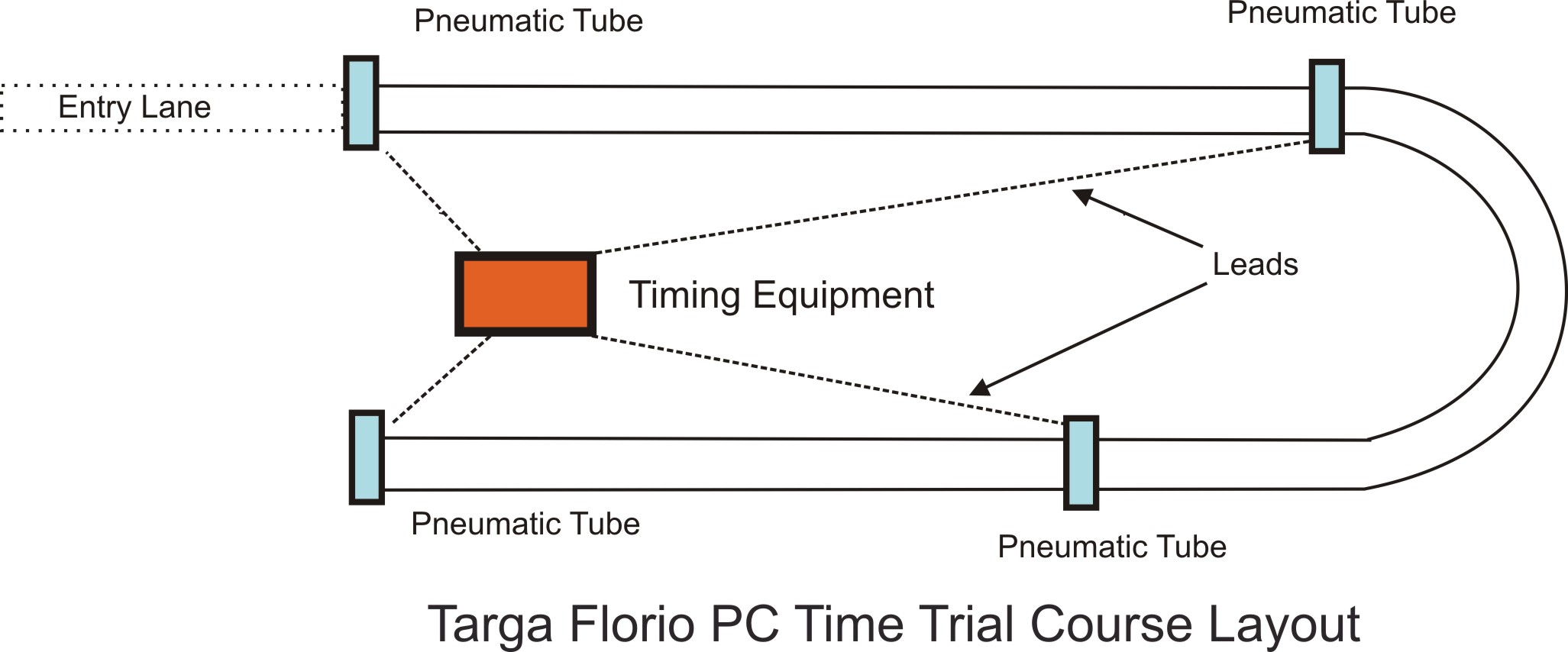
Targa Florio PAVAS Methodology
PAVAS lends itself to a Targa Florio application because of it's unique way of guidance using primarily audio stimulus. Other techniques rely on visual aids and displays which distract the driver and, given the short times in Time Trials, accumulate a significant time penalty.
TF PM's (Average Speed Tests)
The Average Speed test can use PAVAS in the TSD mode to monitor the average speed. If vehicle is maintaining the average speed, then the secret speed check locations should not be a concern. There can be breaks in a stage for lunch and other activities. If PAVAS is left in a powered up state, it will continue to compute the required speed, during the stoppage, to maintain the required average speed. This is Targa Florio Mode 4.
TF PC's (Time Trials)
Time Trials present a different set of problems and special modes are required to satisfy the requirements. The test is similar to a TSD stage where the length of each stage and time required are provided. The difficulty is that a group of stages are run consecutively.
Targa Florio stages have very important Mode three which is designed for slow speed stages. The Road Book shows the distance and the time to be taken for each stage. The difficulty is that two or more stages are run consecutively with each stage starting after the previous one. This makes the navigator's task difficulty because he has to indicate the start of each stage and know what the time is for the stage. He then has to provide guidance to the driver to reach the end of each stage at a specific time. Given that the stages are quite short, the tasks are quite difficult. PAVAS simplifies driving these stages by using a concept of Linked Stages. The officials use a dedicated timer with pneumatics tubes to send the time the vehicle reaches the end of a stage and starting a timer for next sequential stage. A typical course layout is shown below.

PAVAS TF PC Mode Three Linked stages
In Mode Three stages, the time and distance are entered for each stage, together with a link stage number. This allows PAVAS to load the parameters for the next stage. Instead of relying on the navigator to provide a signal to start at the next stage; PAVAS uses the measured distance to initiate the next sequential stage. This simplifies the whole process and just needs the navigator to indicate the start of the first stage in the series.
PAVAS uses the reaction time data to calculate the true distance travelled in the first stage. As each stage is entered PAVAS calculates the required average speed and uses Null Guidance tones to direct the driver to the optimum speed. A further point is that the entry speed to the first stage is critical, so PAVAS uses the stage average speed as a target. This permits the driver to enter the first stage at the optimum speed. Once the Select button is pressed and the stage is commenced, PAVAS reverts to calculating the average speed by the stage distance traveled and the elapsed time in the stage. Since the distances are short, PAVAS reduces any averaging of the speed pulses to give more responsive reading and calculations. The last stage is identified by having a link stage number of zero. The speed average value (1-4) is set in the Set Spd Cal Mode menu
Reaction Time
Consider the effect of the time taken by the navigator to initiate a stage. This is called the Reaction Time. If a vehicle is traveling at 10 meters/sec(36 KPH) and the typical reaction time is 250 milliseconds, then the vehicle travels of 2.5 meters in that time. Since stage distances can be a low as 40 meters this can be a a hinderance to obtaining the correct time. After the stage number is selected PAVAS logs the distance from reference point every 100 milliseconds. When the Select button is pressed, PAVAS calculates the distance traveled by looking up the log while in the Entry Lane and adds that distance to the accumulated distance for the stage.
Starting the Test sequence
Triggering the start of the test is usually performed by the navigator by the Select function on either the front panel or the Reliability switch. Other techniques employing cameras and laser measurements have not been successful.